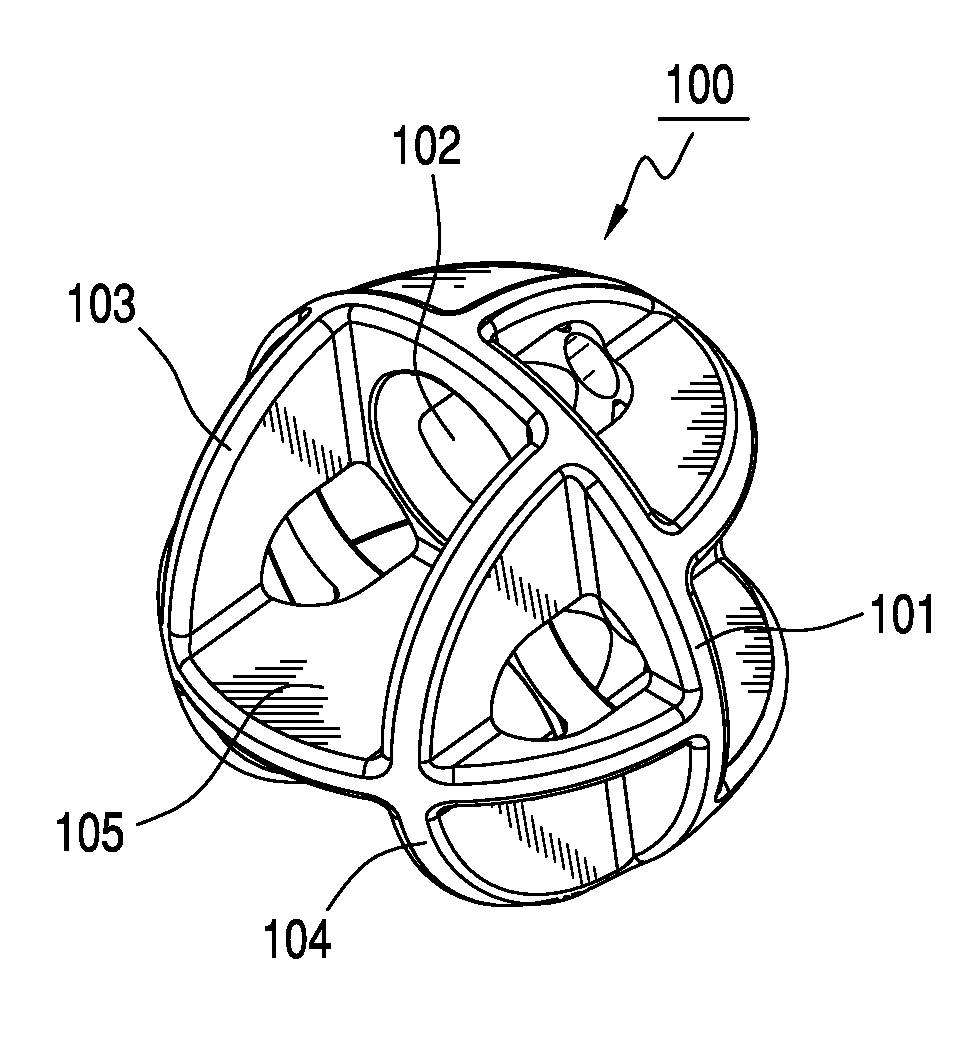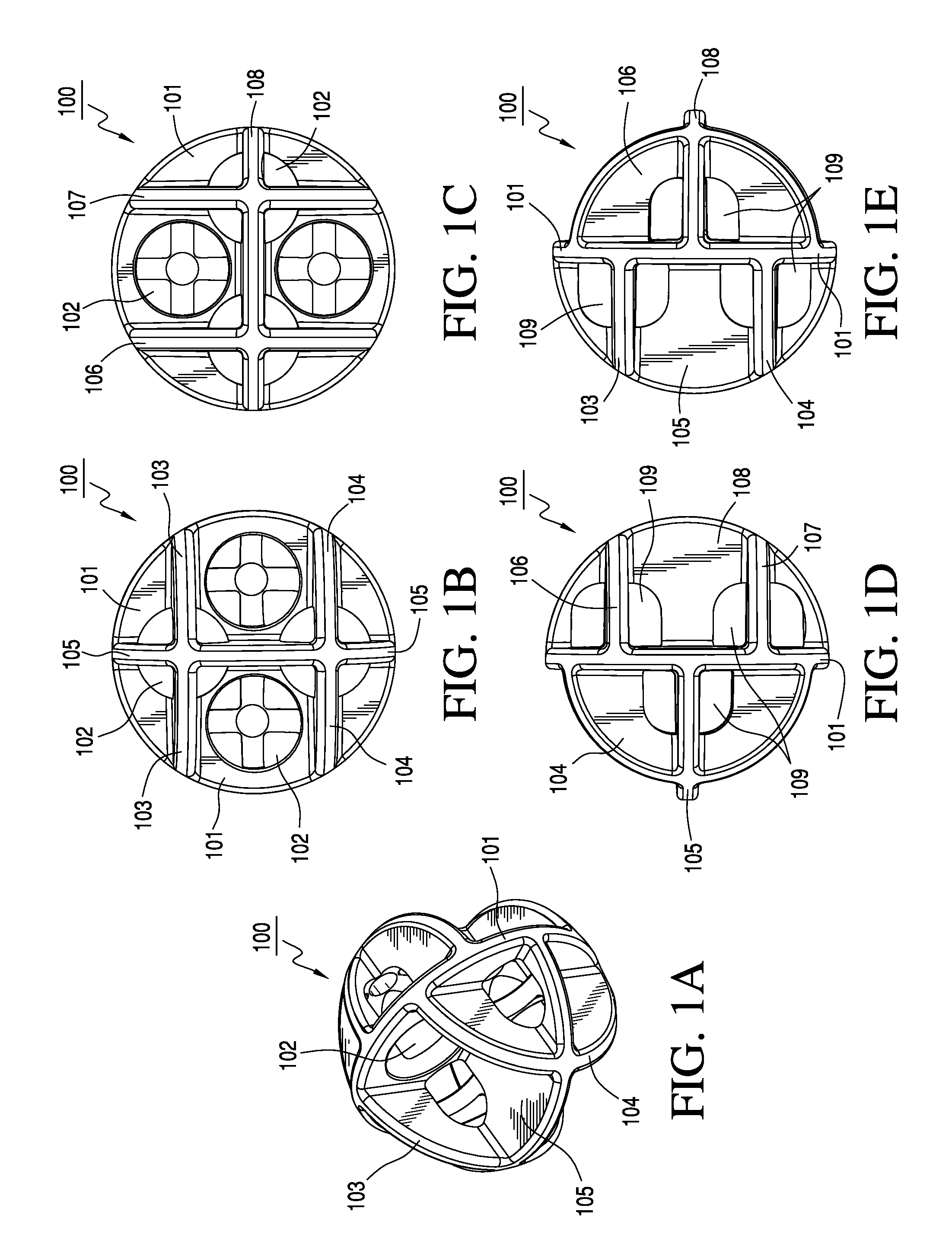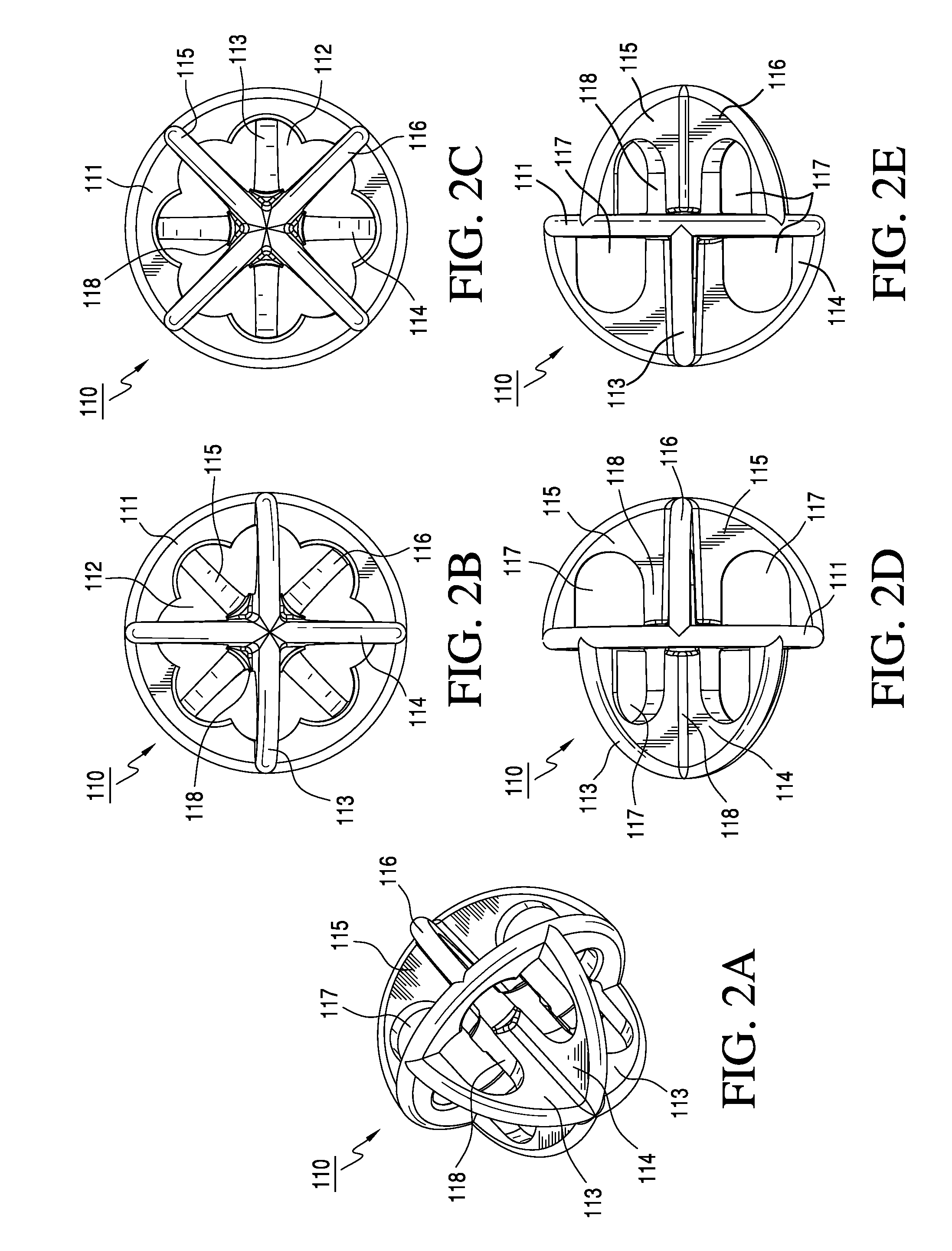Interlocking reinforcement inclusions usable in ultra-high performance concrete and other applications, improved uhpc material and method of making same
a technology of interlocking reinforcement and ultra-high-performance concrete, which is applied in the direction of excavation, flooring, foundation engineering, etc., can solve the problems of low ductility and tensile strength, low strength-to-weight ratio of hpc, and the cost of process requirements is considerably more expensive than those required for other types of concrete, so as to improve the interlocking of inclusions and prevent hazards. , the effect of reducing materials costs
- Summary
- Abstract
- Description
- Claims
- Application Information
AI Technical Summary
Benefits of technology
Problems solved by technology
Method used
Image
Examples
Embodiment Construction
[0069]The present invention involves both an improved method of making ultra high performance concrete (UHPC) structures, and inclusions suitable for use in UHPC structures. Although disclosed in the specific context of UHPC, the method of the invention, which involves vacuum curing, is applicable to concrete structures other than those that utilize UHPC, while the inclusions of the preferred embodiments may be used in application other than those involving UHPC or concrete. In addition, the method of the invention may be applied to concrete structures that utilize inclusions other than those of the invention, while the preferred inclusions may be included in concrete structures formed and cured by conventional forming and curing methods. Initially, an especially preferred embodiment of an inclusion will be described, followed by a description of the concrete structure forming method of the invention, and descriptions of additional preferred inclusions and structures utilizing the p...
PUM
| Property | Measurement | Unit |
|---|---|---|
| compressive strengths | aaaaa | aaaaa |
| compressive strengths | aaaaa | aaaaa |
| compressive strengths | aaaaa | aaaaa |
Abstract
Description
Claims
Application Information
 Login to View More
Login to View More - R&D
- Intellectual Property
- Life Sciences
- Materials
- Tech Scout
- Unparalleled Data Quality
- Higher Quality Content
- 60% Fewer Hallucinations
Browse by: Latest US Patents, China's latest patents, Technical Efficacy Thesaurus, Application Domain, Technology Topic, Popular Technical Reports.
© 2025 PatSnap. All rights reserved.Legal|Privacy policy|Modern Slavery Act Transparency Statement|Sitemap|About US| Contact US: help@patsnap.com



